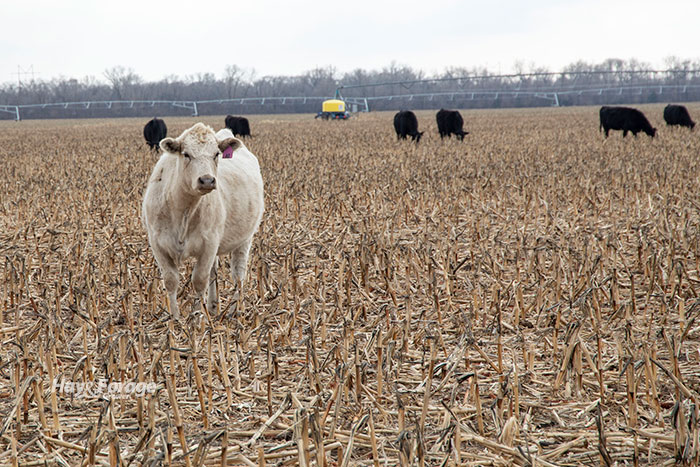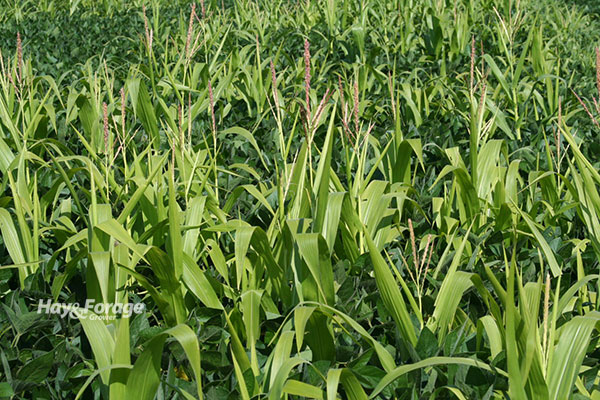
Simply put, a weed is a plant that is growing in an unwanted area and competing with desirable species. Although corn is usually planted intentionally, it can act like a weed when it grows among the following year’s soybeans.
Volunteer corn is especially prevalent this year in areas that experienced dry conditions in 2021. Heather Gessner with South Dakota State University says this is because drought-stressed corn produced small ears that were not successfully harvested last fall and were left to germinate in soybean fields in the spring.
The livestock business management field specialist notes volunteer corn can be controlled with herbicide, but this practice might lower soybean yields. Fall corn residue grazing, on the other hand, is a proactive approach to reducing volunteer corn because cattle readily consume ears, leaves, and husks. It can also alleviate feed costs and improve animal performance, and Gessner suggests it is a win-win situation for landowners and livestock producers.
“If the cattle are your own, the income generates from feed savings while animals gain weight and body condition,” Gessner states. “If you rent out the acres, cash rent will come in, and grazing will reduce the herbicide needed in 2023 to combat volunteer corn.”

Leasing land
To develop a lease agreement, determine a rental rate before grazing. Gessner cites recent rates between 50 cents and $1.20 per head per day, but they ultimately depend on current grain prices, corn yield, and feed availability.
“Corn yield is directly related to the amount of feed available to cattle,” she says. “High-yielding corn leaves more leaves, husks, and stalks in the field than low-yielding corn. The more feed available, the longer cattle can graze, or the more (gain) animals can be put on the field for a shorter time.”
Stocking rates are also contingent on corn yield, as well as herd size, animal weight, field area, grazing duration, and forage utilization. To demonstrate this, Gessner offers an example in which 200 cows graze a 160-acre cornfield. The animals average 1,400 pounds and consume approximately 50% of the crop residue. If corn yields are 180 bushels per acre, cattle could graze for 34 days. Moreover, if yields are 75 bushels per acre, the grazing window would only be about 15 days.
To take this scenario a step further, Gessner calculates the leasing fee if land rent is $20 per acre. It would cost approximately 47 cents per head per day if cattle graze for 34 days, whereas the fee would be roughly $1.07 per head per day if they graze for 15 days.
Other aspects of the lease agreement include water and fencing. “Water issues can be alleviated through temporary water sources and hauling, or by installing permanent water facilities if grazing the area becomes a yearly activity,” Gessner states. “Likewise, the lack of fence can be covered with the use of electric fence, updating the existing fence, or installing a permanent fence if the location is going to be used every year.”
In summary, cornstalk grazing can be mutually beneficial for crop and livestock producers. For best results, Gessner recommends communicating expectations and considering all of the factors of this type of combined system to establish a leasing fee and stocking rate that both parties approve.

Amber Friedrichsen served as the 2021 and 2022 Hay & Forage Grower summer editorial intern. She currently attends Iowa State University where she is majoring in agricultural communications and agronomy.

